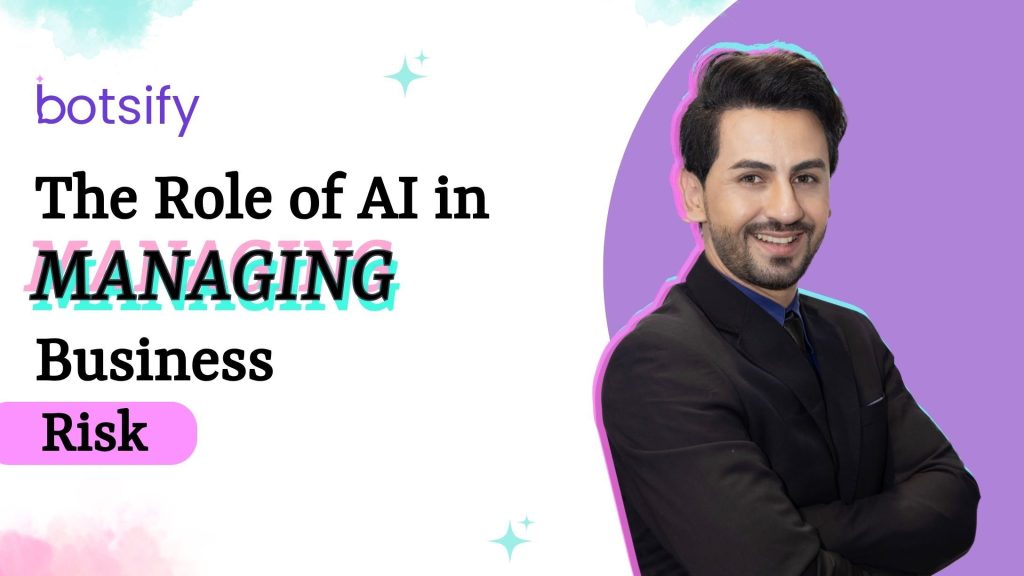In business, it is often the risk you don’t see that causes the most damage. It may surround compliance regulations, legal troubles with a supplier, or an AI-generated phishing email that has quietly inserted malware into your company’s IT system. With organizations and government agencies needing to detect and eliminate increasingly more complex risks with limited resources, turning to new and innovative strategies is imperative.
By utilizing artificial intelligence, vast amounts of data can be quickly and efficiently analyzed, uncovering potential problems that traditional methods may otherwise miss. This improved decision-making process ensures faster decisions, better resource allocations, and regulatory compliance maintenance.

AI in Risk Management
Artificial Intelligence, or AI-powered risk management strategies, improve decision-making by utilizing machine learning, predictive analytics, and automation to identify patterns and predict potential issues before they have an opportunity to develop.
By leveraging enterprise risk management software with AI-driven mitigation strategies and processes, companies can move from reactive problem-solving to proactive risk prevention, ensuring that projects and operations remain on track and within a pre-established scope.
However, it is crucial to remember that AI itself introduces risks of its own. As a digital technology, these systems have complex and intricate supply chains of code, which makes them vulnerable to threats attempting to disrupt their algorithms and Large Language Models (LLMs). To combat these vulnerabilities, organizations should also integrate AI Security Tools to detect, prevent, and respond to emerging cyber threats targeting AI systems.. Furthermore, due to the sheer volume of data that AI can process, the presence of highly sensitive information in such large quantities could make it a target for motivated cybercriminals.
Finally, it is vital to appropriately navigate all ethical and regulatory issues surrounding the usage of AI. One of the most effective ways to manage these risks is by creating an internal AI governance committee. This committee would establish and enforce clear and concise policies regarding privacy, transparency, and the overall responsible usage of AI platforms.
AI Agentic Platform For Building Portable AI Agents
Say Hello To Agentic AI That Connects With Your CRM And Even Other Agents
Roles & Responsibilities
The role of AI in risk management covers a number of key components, helping to save valuable time and resources while boosting overall operational productivity.
Document Summarization
Risk and fraud teams within an organization are responsible for ensuring their companies maintain compliance with various industry and government regulations, locally, federally, and internationally. However, this work often presents several ongoing challenges, primarily surrounding the fact that these regulations are continuously changed and revised, with these changes not always clearly and concisely stated or defined.
Implementing AI tools can enable quicker and more comprehensive reviews of regulatory documents and updates, summarizing any changes and other important information into plain language. This will allow compliance teams to better respond to compliance requirements, mitigating the possibility of hefty fines, reputational damage, or loss of customers.
In addition, alongside document summarization, AI can assist in reviewing a wide variety of different documentation, including internal communications, financial statements, and data relating to high-risk customers and transactions for any irregularities or discrepancies. These comprehensive reviews can then provide reliable summaries and actionable insights on a range of different risks. For managing and analyzing this information efficiently, understanding the use of spreadsheets vs annotation tool can be highly beneficial.

Risk Identification & Assessment
One of the most essential ways AI is transforming risk management is through predictive analytics. Traditional strategies typically rely on static risk registers, which often become outdated as corporate and industry conditions evolve and change. AI ensures continuous monitoring by analysing these real-time changes in data and identifying potential risks.
Machine learning algorithms have the ability to process large amounts of historical data and information to identify risk patterns and subsequent issues that may emerge as a result. Natural language processing (NLP) is another significant tool for risk identification. It works by scanning reports, meeting notes, and emails, detecting any concerns, stakeholder sentiments, and other potential red flags that could go unnoticed.
Mitigation & Decision-Making
AI can play a vital role in risk mitigation by providing real-time suggestions and decision support. It can recommend proactive response solutions based on data collected on similar past scenarios. A prime example of this is creating simulation models that can comprehensively evaluate various response strategies and predict their potential outcomes. By offering the ability to assess the impacts of multiple approaches, management teams can reduce uncertainties and make more informed and accurate decisions.
Furthermore, AI agents can offer the opportunity to automate routine risk mitigation processes. AI-driven automation can trigger risk responses based on predefined criteria, such as adjusting a budget when costs exceed a specified limit or redirecting resources when a scheduling delay is detected. This can help reduce the burden on project managers and ensure that issues are addressed in a timely manner.

Continuous Planning & Adaptation Support
In today’s fast-paced corporate environment, risks are constantly changing and evolving. AI facilitates continuous planning by providing real-time risk insights, which enables management strategies to be adjusted as new data becomes available. This allows companies to remain flexible with their response strategies to remain effective and proactive.
Additionally, AI-enhanced dashboards and reporting tools offer clear visual insights into potential risk exposure, allowing for better-informed decisions to be made in a more timely manner. By automating data analysis and critical risk reporting, AI agents can minimize the potential for human error and enhance overall efficiency and productivity.
Portable AI Agents In Seconds, Use Everywhere
Prompt, Test, and Deploy AI Agents Across Social Platforms and LLMs. Automate Everything.

